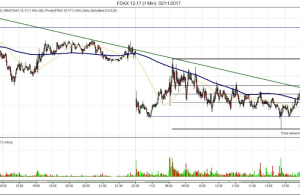The Bank Of Japan Financial System Report
The Bank of Japan publishes the Financial System Report twice a year in order to assess the stability of the Japanese financial system and facilitate communication with interested parties who are concerned about such stability. The bank provides a regular and comprehensive assessment of the financial system with emphasis on detailing the structure of the system and the policies taken to achieve a robust system.
The bank uses the results of the report to plan the policy to be followed, ensuring the stability of the financial system and provide guidelines and warnings to financial institutions. The bank uses the results of international regulation and supervisory discussions.
In the April 2017 report, the bank reported a notable rise in the prices of the main stock indices and interest rates after the election of the new president of the United States. In Japan, there was also a rise in the stock market and the Yen depreciated. The bank continued with its policy of Quantitative and Qualitative Monetary Easing with Yield Curve Control
The internal loans of the financial institutions in circulation had increased close to 3% annually. There were no signs of overheating in the activity of the financial system nor the real estate market. In general, the financial system had maintained good stability since the crisis of 2008. The capital ratios required by financial institutions were above the level requested by the central bank and had sufficient capital for the risk to which they were exposed.
The results of the macroeconomic stress test indicated that financial institutions as a whole could be considered strong and resistant to economic stress situations. Developments in profits and capital of each institution in these situations of stress varied showing more robust institutions than others.
For the bank, the rise in the US stock market reflected better expectations of the economy and the administration of the new government. As a result of these better expectations about the United States, the dollar appreciated against the major currencies of the world.
In terms of the European financial markets, the stock market had maintained a good general performance coupled with low volatility. The most volatile period of the last two years occurred after the referendum of U.K.
Regarding the monetary policy of the Japanese central bank, the short-term interest rate remained close to 0% or in negative territory. The yields of the Japanese Government Bonds (JGB) continued to show a normal behaviour with the guidelines of market operations where the interest rate had been set at -0.1% and the target on yields on 10-year bonds was 0%. In the following graph, you can see how the yield curve of the JGB was.
Graph 82. Long-Term JGB yields (10 years) and JGB yield curve. Retrieved 5th March 2018 from https://www.boj.or.jp/en/research/brp/fsr/data/fsr170419a.pdf https://www.boj.or.jp/en/research/brp/fsr/data/fsr170419a.pdf
As for the Japanese stock market, it had shown an upward trend thanks to the good global performance of the shares, mainly in Europe and the United States. Since the end of 2016 and in 2017, the Japanese index had shown a stable behaviour without major changes.
The amount of credit risk of the main financial institutions had shown a downward trend. This was the result of improving the quality of the loans, which reflected a better dynamic of the economy in general. The following graph shows the decreasing trend of the risk of the main banking institutions.
Graph 83. Credit risk among financial institutions. Retrieved 5th March 2018 from https://www.boj.or.jp/en/research/brp/fsr/data/fsr170419a.pdf
In the second report of the year in October 2017, the bank noted that global volatility in the main financial markets remained low, along with positive but moderate economic growth, despite geopolitical tensions with North Korea and the United States. There were no significant changes in capital flows including flows destined for emerging markets.
In Japan, the monetary policy followed an accommodative path and the trend of loans granted had slowed due to a higher cost of loans in foreign currencies. Regarding the local financial market, the rate of growth of loans grew to 3%, and the demand for loans by small companies had improved.
The bank did not observe any financial imbalance in the assets and the financial entities. They continued using accommodative policies granting loans without major restrictions to the economy.
The real estate market showed no signs of overheating, but there was evidence of high prices in some places in Tokyo. In the stress scenarios applied by the central bank, if the financial market faced complex situations and the risk spread to the real economy, this could affect the real estate market.
The bank also did not observe greater imbalances in financial institutions or economic activity, so most commercial banks had good ratios between debt and capital, which made them resistant to stress situations as in the first delivery of 2017. The banks were robust in capital and liquidity regardless of the scenario in which the economy was located, due to a good rebalancing of the portfolios of the banks that have faced a greater demand for loans.
The benefits of Japanese banks have been decreasing, but this is happening at a general level in developed economies due to an environment of low-interest rates which was implemented by banks after the 2008 crisis. In Japan, they have also seen a decrease in the margins of profit of the banks due to the high competition between banks by the market, and in recent years have seen more exits of the market than entries of new banks.
A significant risk that the bank observed was the continuation of low-interest rates in the main economies in the world, which led to greater liquidity in the markets and investors taking more risk than desired by the bank’s board. Given the above, stocks in the United States and Europe had reached record highs, and valuation indicators P/E (Price/Earnings ratio) had reached historically high levels.
As in the April report, the volatility of the financial markets was low, which could mean an excess of market confidence at current valuations and an excessive risk taken by investors, coupled with greater investor leverage. All this generated a greater risk than desired by the bank’s committee.
In terms of financial markets, the short and long-term interest rates remained stable as programmed by the monetary easing policy and share prices had risen moderately. The short-term interest rate remained in negative territory.
The Yen had depreciated against the Euro reflecting a decrease in uncertainties concerning political situations in Europe, and expectations of a reduction in the monetary policy of the European Central Bank (ECB). On the other hand, the Yen remained stable against the Dollar since the second half of 2017 and some investors expected an appreciation against the Dollar due to some political risks in the United States.
Finally, in the bank’s report, the committee stated that financial institutions had continued to increase their balance sheets reflecting an increase in deposits and the rebalancing of portfolios including risky assets. Assets and total debts of financial institutions increased to 236 trillion yen since 2012, and the portfolio was continuously balanced between bonds and shares.
In conclusion, with the reports issued in 2017 by the Bank of Japan, the financial system was resistant to stress situations tested by the bank, although as in most countries there are banks with better asset quality and portfolios, there are always recommendations for some specific banks. The economy grew moderately during 2017, and monetary policy remained accommodative to encourage banks to grant more loans and thus generate more growth which in the medium term would lead to inflation at 2%.
As mentioned previously, the bank saw some risks in international markets due to a euphoria unleashed, mainly in the stock markets, which could generate imbalances in the real estate sector of the economy. Regarding the Yen with respect to other currencies, the behaviour was stable during the year, although there were slight depreciations concerning the Euro and the Dollar.
©Forex.Academy






